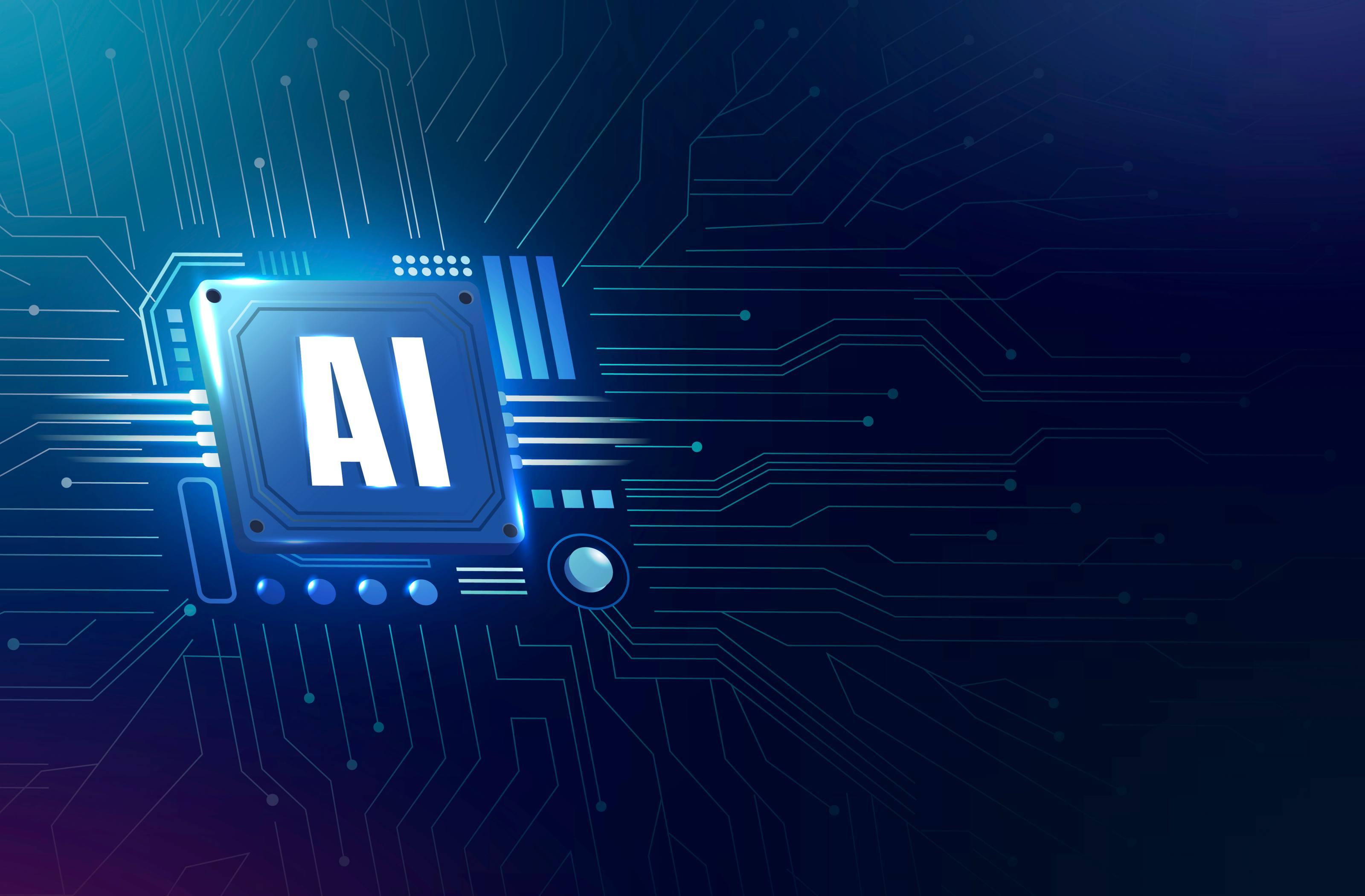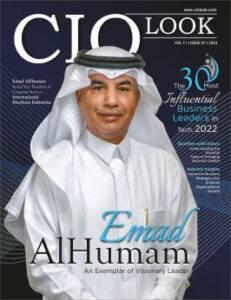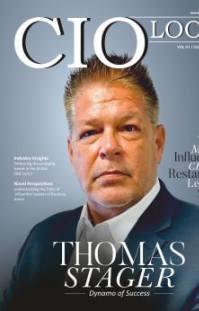



BECAUSEYOUR STORYDESERVES THE SPOTLIGHT





BECAUSEYOUR STORYDESERVES THE SPOTLIGHT
Intoday’srapidlyevolvingworkplace,organizationsare
activelypursuinginnovativeapproachestoengageand empower their employees. By advancing beyond traditional platforms to embrace immersive, connected environments, these technologies are fundamentally transforming the ways employees interact, collaborate, and contribute to organizational goals. As workforce expectations increasingly emphasize inclusion, connection, and shared purpose, AI-enhanced virtual experiences have become essential in elevating the employee experience (EX).DomhnaillHernonhighlightsthatthefutureofwork reliesonthedeliberateintegrationoftechnologytosupport authentic self-expression, foster diversity, and drive inclusiveinnovation.
CIOLook in its recent edition titled AI & Intelligent Realities Deliver a New Era of Employee Experiences, highlights how AI-driven enterprise technologies are transforming digital engagement by moving beyond conventional platforms toward immersive and connected environments Today’s workforce increasingly values inclusion, connection, and a shared sense of purpose, prompting organizations to adopt AI-enhanced virtual experiences that significantly elevate the employee experience (EX). The market for AI-powered immersive solutionsisprojectedtoreach$800billionwithintwoyears,

underscoring their expanding influence across sectors Progressive organizations are actively investing in these platforms to enhance professional development, internal communication,employeeretention,andoverallproductivity By integrating spatial computing with AI, immersive environments facilitate collaboration, innovation, and alignment with organizational objectives on a global scale—capabilitiesthattraditionaltoolsstruggletoprovide.
Amid a decade-low in employee engagement, immersive experience platforms create meaningful spaces that reinforce culture and re-engage employees through rich, interactive sensory experiences. These solutions not only accelerate learning and reduce training costs but also improve job satisfaction, particularly among younger generationswhodemandflexibleandinclusiveworkplaces. EY’s acclaimed immersive platform,WeVerse, exemplifies how AI and virtual reality can revolutionize onboarding, training,andcollaborationthroughastrongfocusonhumancentricdesign.
Haveagreatreadahead!


PoojaMBansal Editor-in-Chief
CONTENT
Deputy Editor Anish Miller
Managing Editor Prince Bolton
DESIGN
Visualizer Dave Bates
Art & Design Director Davis Mar�n
Associate Designer Jameson Carl
SALES
Senior Sales Manager Wilson T., Hunter D.
Customer Success Manager Nelson M.
Sales Execu�ves Tim, Smith
TECHNICAL
Technical Head Peter Hayden
Technical Consultant Victor Collins July,
Research Analyst Eric Smith
SEO Execu�ve Alen Spencer
FOLLOWUSON


www facebook.com/ciolookmedia/ www.x.com/ciolookMedia
www.linkedin.com/company/ciolook
WE ARE ALSO AVAILABLE ON
CONTACTUSON
Email info@ciolook com
For Subscrip�on www.ciolookmedia.com
Copyright © 2025 CIOLOOK, All rights reserved. The content and images used in this magazine should not be reproduced or transmi�ed in any form or by any means, electronic, mechanical, photocopying, recording or otherwise, without prior permission from CIOLOOK. Reprint rights remain solely with CIOLOOK.



Hernon Global Lead
EY Intelligent Reali�es Lab
AI-driven enterprise technologies are transforming
digital engagement by moving past conventional platforms and toward more interactive, connected environments Traditionaltoolsarenolongersufficienttomeet thechangingneedsofmodernworkforcesthatviewinclusion, connection,andasenseofsharedpurposeascorepillarsofthe workexperience.
Once viewed as speculative hype, the concept of immersive experienceshasmaturedintopracticalinnovation,particularly inenhancingtheemployeeexperience(EX) Projectedtoreach $800 billion in two years, theAI-driven virtual experiences marketispositionedtotransformeveryindustry.
Future-focused organizations are currently investing in immersive experience solutions to amplify professional development, internal communication, retention, and productivity Immersive experience platforms deliver dynamic, AI-augmented environments where global teams can network, share knowledge, express creativity, and feel more aligned with their organization’s overarching objectives. These experiences combine spatial computing, presence, and interactivity to significantly enrich digital culture.
This article examines how immersive platforms reshape content and EX strategies, and why organizations must start building agile foundations to meet the demands of the future workforce.
Employee engagement plummeted to a decade low in 2024, with just around 32% of US employees indicating they feel engagedatwork,accordingtoGallupOrganizationresearch
Engagement refers to employees that are “involved in, enthusiastic about, and committed to their work and workplace”Youngerworkersunderthirty-fivearedrivingthis trend, citing lack of recognition, growth opportunities, and moderntoolsastopreasonsfordisengagement.
To address the decline, organizations are introducing AIpowered collaboration and productivity solutions that align withchangingemployeeexpectations Amongthesesolutions, immersive experience platforms offer purposeful spaces for strengthening company culture and connection to shared objectives.
Innovative immersive experience solutions offer sensory-rich interactions grounded in spatial memory, environmental context,andintuitivesocialinteractions,elementsthatcan’tbe replicated by traditional productivity tools As these platformsevolve,organizationsareincreasinglyapproaching them as strategic extensions of real-world work settings. Designed to support professional development, amplify business values, and unify culture across distributed teams, these platforms boost retention, engagement, and performanceoutcomes.
TheUS BureauofLaborStatisticsandEYanalysisindicates thatby2032,millennials,GenerationZandGenerationAlpha are expected to comprise about 70% of the U.S. workforce; alreadymanyhavetransitionedintoleadershiproles.GenZ, morethanpreviousgenerations,areredefiningtheEXaround expectations of organizational integrity, mental health support,faircompensation,andnon-linearworkoptions.
AI-driven solutions, such as immersive experience platforms, enableorganizationstoestablishanewroadmapforthe

working world and elevate employee-desired standards like well-beingandworkflowflexibility Employeescanleverage thesedigitalspacestocollaborateinreal-time,participatein companyevents,andaccesstrainingprograms.
Immersive experience solutions are valuable tools in incentivizing professional and personal development, expediting learning by up to three times and improving knowledge retention by up to five times. They can also decreaselearningexpensesby40%,enhanceproductivityby 25%,andimproveemployeesatisfactionby10%.
One prominent example is the industry acclaimed EY immersiveexperienceplatform,WeVerse,distinguishedforAI innovation in improving workplace engagement and its immersive virtual environment Providing high-fidelity, custom immersive experience solutions designed to maximize accessibility, the solution motivates growth, purpose,creativity,andcompetitionviaengaginginteractions andgames.
EYWeVerse was honored for Best Experimental Design and Work & Productivity at The 2025Annual WebbyAwards for
creating a virtual space pushing physical boundaries to a ling degree. In 2025 alone, EY WeVerse was also recognizedfor Innovation in Internal Communications atthe Employee Communications Awards; Best Use of Gamification in the Workplace at the WorkLife Awards; andInnovativeAIProductsattheAIExcellenceAwards.
EYWeVerseisledbytheEYIntelligentRealitiesLab, anEYinitiativethatideates,explores,anddevelops solutions to transform how EY and its clients operate through the convergence of advanced technologies like AI, virtual reality (VR), and augmented reality (AR). The Lab’s multiple award-winning team focuses on three primary areas, including immersive learning and employee engagement via gamified, GenAIdriven experiences like WeVerse; digital twins and synthetic simulations to accelerate robotics, industrial transformation and physical AI; and responsible AI that emphasizes humans-at-thecentertechnicaldesignanddevelopment.
3D internet is becoming a tangible, intelligent mirror orld where AI, robotics, and digital twins converge ineandoptimizerealityinrealtime,”describesSteve Creative Director, EYIntelligent Realities Lab. “As GPU power, cloud streaming, and real-time simulation becomeubiquitous,technologiesthatwerejustrecentlyinthe realm of science fiction are now powering the next era of humanandmachinecollaboration.”
EYWeVersewasrolledouttoover4,000EYinterns,offering gamified challenges, networking opportunities, and personalizedprofessionaldevelopmentpathways.Thesolution “The
3D internet is becoming a tangible, intelligent mirror of our world—where AI, robotics, and digital twins converge to reimagine and optimize reality in real time.”
earned the Innovation and Internal Communications achievement at the Ragan Employee Communication Awards. It’s a popular solution among EY interns, who commendtheinclusiveandengagingonboardingexperience itdelivers.
As immersive platforms shift into more extensive enterprise adoption, CIOs face the challenge of integrating these experiences into existing IT ecosystems while enabling scalability, performance, and security Infrastructure readinessisonlyonefacet;technologyleadersmustestablish governanceframeworksthatalignwiththedynamicnatureof virtualengagement.
EY Intelligent Realities Lab adopts a unique approach by testingandscalingsolutionsinternallyacrossglobalEYteams before client deployment. This ensures every solution is enterprisegrade,withthehigheststandardsfordatasecurity, privacy, scalability, and reliability The Intelligent Realities team is also pioneering responsible AI frameworks that incorporate behavioral science, neuroscience, and creative thinking to maintain humans
-in-the-loop by design while enabling innovative experiences.
“The collaboration between creative technologists and business leaders is essential for achieving multi-dimensional impact—social, cultural, and economic—by integrating a transformative creative lens that ensures technology aligns with human values and fosters holistic solutions for a better future,”explains Danielle McPhatter, Creative Technologist, EYIntelligentRealitiesLab.
Leadership will be a critical component in ensuring these technologiesareintentionallyalignedwithemployeeneedsand expectationstoshapehuman-at-the-centerdigitalworkplaces.
“The true promise ofAI-enhanced immersive experiences isn’t technological, it’s human,” says Domhnaill Hernon, EY Global Intelligent Realities Lab Leader. “As enterprises build their future work environments, they must ensure immersive platforms support authentic self-expression and the full spectrum of the human experience. This extends to designing for neurodiversity, supporting identity expression, andenablinginclusiveinnovation.”
LeadingwithHumans-at-the-CenterExperiences

fworkwon’tbedefinedbytechnology,butbyhow ully technology is embedded into the human ence For CIOs and business leaders, immersive erience solutions can unleash high-value opportunities to reconceptualize how individuals contribute,learn,andevolve.
Prioritizing agency and authenticity in virtual environmentswillenableorganizationstofoster cultures with diverse talents, driving agile workforcetransformationatscale
Wi
th this rapid digital economy of the modern age, artificialintelligence(AI)isarevolutionaryforce in all key industries. Improving supply chains, customer experience, talent management and finance forecasting,AIisempoweringorganizationstoinnovate,grow, and stay ahead of others AI-powered workplace applications arebeingembracedbyorganizationsofeverysizeandshapeto automate, become productive, and take informed decisions The aspiration is to automate but in wiser, nimbler, and more human ways. Since more and more companies are adopting moreflexibleworkpatterns,suchasremoteandhybridpatterns, thedemandfortechnologythatallowsfrictionlesscollaboration andoperationalefficiencyhasgrownmanifold.
The most obvious impact ofAI on the workplace is that it is capable of doing routine and repetitive tasks. Artificial intelligence technology such as robotic process automation (RPA), intelligent scheduling assistants, and automated processing software are freeing employees from routine administration tasks These may be entering customer information,processinginvoices,managingemails,orcreating reports With these done by computers, businesses eliminate mistakes,savecosts,andaccelerateturnaroundtimes Artificial intelligenceisnowbeingaddedtoproductivitysoftwaresuchas Microsoft365,GoogleWorkspace,andSlackinmostmodern workplaces.Theyusenaturallanguageprocessingandmachine learning to offer context-aware assistance in real time. They can recommend documents, write emails based on past exchanges,organizemeetings,orsummarizelongarticlesand arguments.
AI in collaboration software also enhances multitasking and less mental exhaustion. Instead of jumping between multiple websites or spending hours in information gathering from


systems, employees are given AI-driven dashboards that consolidate essential information and present it on a single platform De-emphasizedfunctionalityallowstheusertofocus on activities requiring critical thinking, strategy, and human relationshipskills Intelligentautomationinthelongtermleads to a less chaotic, better-organized workplace where productivitycanflourish
Another value-added advantage of AI-driven workroom software is decision-making capability through predictive analyticsandreal-timedatainterpretation AIapplicationscan analyzehugevolumesofstructuredandunstructureddatafrom diverse sources and uncover implicit patterns, trends, and anomaliesthatmaynotbefoundthroughhumananalysis.These canbeusedtocreatestrategicmarketing,sales,operations,and HR-related decisions. Predictive models allow companies to predictcustomerdemand,forecastinventory,detectfraud,and manymoreefficiently
In human resources, for instance, AI can read employee satisfactionquestionnairesandpredictturnoverlikelihoodsand makerecommendationsforcustomizedretentioninitiatives.In finance, AI programs can project earnings from past performanceandprovidemarketdata.Inlogistics,theprograms can predict supply chain breakdowns and recommend preventive measures Business intelligence itself is transformingasartificialintelligencemakesiteasilyaccessible Power BI, Tableau, and Looker, among others, now haveAI capabilities that will automatically generate reports, visualizations, and natural language summaries. All of these allownon-technicaluserstoexaminedataandmakeinferences withouthavingtobecomeskilledstats.Decision-makingthus becomes democratized and inclusive, and additional employeesinthebusinesscanprovidestrategicinputs.Realtime decision-making is significant in volatile settings Artificial intelligence systems can monitor in real time and notifywhenoperationsgooffastandardpattern.
Enabling a Human-Centric and Collaborative Work Culture
Whilebusinessautomatizationanddataanalysisareacommon AItopic,itsinfluenceoncompanycultureisimportantaswell While AI technologies are automatizing businesses to be operated more efficiently, they're also making more humanfriendlyworkplacesintheprocess.Withmundanetaskstaken care of by automation,AI allows people to excel at strategy, creativity, and emotional intelligence work This
transformation is helping in attaining higher levels of job satisfaction, morale, and retention.AI solutions are also enhancingcommunicationamongcomplicatedandspread-out groups Natural language processing solutions can capture meeting minutes, summarize meeting essentials, and even translate real-time discussions This type of capability is extremely beneficial for global teams who operate different timezonesandlanguages.
PlatformslikeZoom,MicrosoftTeams,andGoogleMeethave included AI-based features that further information accessibility and participation, making everyone an equal contributor in terms of information and empowered to participate fully in discussions The capability of AI to customize also renders the workplace employee-friendly Adaptivelearningprogramscancustomizeprofessionalgrowth plansbasedonindividualstrengthsandobjectives,makingthe training process more effective and enjoyable. Wellness platforms online can track communication trends and workload, detect burnout or overload warning signs, and recommend changes. They enhance a healthier wellnessproductivity balance, more vital in our interconnected workplace today AI is also changing the evaluation of performanceandfeedback.
AI workplace solutions are changing the future of work by bringingtogetherautomation,analytics,andcollaborationasa single business strategy that is good for business and its workers.Thesetechnologiesallowcompaniestoworksmarter, make smarter decisions, and create more open, empathetic workplaces.Byautomatingroutineworkandgivingemployees real-timeinsight,AIallowshumanworkerstofocusonhighervalue tasks that drive growth and creativity With more companies more deeply embedded in daily business routines, organizations need to implement its use responsibly Transparency,dataprivacy,anddiscriminatoryalgorithmsare someoftheissuesthatneedtobetackledfortheguaranteeof trustandsustainablesuccess.




Intoday’sfast-pacedandincreasinglydigitalbusiness environment, employee engagement stands as a fundamental pillar for organizational success Companies that prioritize engagement enjoy higher productivity, reduced turnover, and stronger innovation However,traditionalengagementstrategiesarenolonger sufficient in addressing the evolving expectations of a diverse workforce. Technology, when effectively leveraged, offers a revolutionary approach to fostering deeperconnectionsbetweenemployeesandorganizations. Byenhancingcommunication,personalizingexperiences, and utilizing data analytics, technology empowers companies to build a more engaged and motivated workforce
This article outlines how these technological advancements are reshaping employee engagement and drivingmeaningfulorganizationaloutcomes.
Enhancing Communication Channels for Greater Connectivity
Communicationisthecornerstoneofengagement,shaping how employees relate to their roles, teams, and the company’smission.Historically,organizationshaverelied on emails, bulletin boards, and face-to-face meetings to disseminate information While these methods remain relevant, they often fail to deliver the immediacy and interactivity required in modern workplaces. Today’s workforcedemandscommunicationchannelsthatarefast, flexible, and accessible from anywhere. Technology answers this call through platforms such as instant messaging apps, video conferencing tools, and cloudbasedcollaborationsoftware.


Thesedigitalcommunicationtoolsenablereal-timeinteraction, reducing delays and misunderstandings. For instance, team memberslocatedindifferenttimezonescanparticipateinlive discussions,sharedocumentsinstantly,andprovideimmediate feedback Such connectivity breaks down silos and fosters a culture of collaboration and inclusivity Importantly, communication technology also supports transparent leadership by making information about company goals, changes,andsuccessesmoreaccessibletoallemployees.When employeesfeelinformedandincluded,theydevelopastronger emotionalconnectiontotheorganization,whichisakeydriver of engagement. Moreover, many modern communication platformsintegratefeaturessuchaspolls,surveys,andfeedback channels These tools give employees a voice and help managersassessmoraleandsatisfactioninrealtime
PersonalizingEmployeeExperiencewithDigitalSolutions
Employee engagement is not a one-size-fits-all proposition Eachemployeebringsuniquemotivations,strengths,andcareer aspirations to the workplace. Recognizing this, forwardthinking organizations are adopting technology that enables personalization of the employee experience Digital learning platforms,forexample,allowemployeestopursuetrainingthat aligns specifically with their roles and interests. Personalized learning pathways help employees grow in ways that feel meaningful and relevant, reinforcing their sense of purpose withinthecompany
Inadditiontolearning,recognitionandrewardsystemsbenefit significantly from technological innovation. Traditional approaches, such as annual performance reviews or generic bonuses, are often insufficient to maintain high levels of engagement. Modern engagement platforms incorporate realtime recognition features, allowing peers and managers to acknowledge contributions immediately and publicly This timely feedback reinforces positive behaviors and creates a culture of appreciation Furthermore, gamification elements suchasbadges,leaderboards,andchallenges can injectasenseoffunandcompetition,increasingparticipationin engagement activities. Personalization extends to work-life balance and wellness initiatives as well. Technology-enabled wellness programs can tailor health recommendations, mindfulness exercises, and fitness challenges to individual employees’needs
LeveragingDataAnalyticstoDriveEngagementStrategies
One of the most profound ways technology revolutionizes employee engagement is through the use of data analytics
Historically,measuringengagementwaslimitedtoinfrequent surveysoranecdotalobservations,whichoftenmissedcritical insights Today’sorganizationshaveaccesstovastamountsof datageneratedfromvariousengagementtools,communication platforms, and performance systems. Analyzing this data providesaclearerandmorecomprehensivepictureofemployee sentimentandbehavior
Data analytics enables companies to identify patterns and correlations that inform strategic decision-making. For example,ifengagementscoresdipinaparticulardepartment, managerscaninvestigaterootcausessuchasworkloadissues, leadershipchallenges,orinsufficientrecognition Byactingon these insights, organizations can implement targeted interventionsthatdirectlyaddressproblemareas Additionally, predictiveanalyticscanflagemployeeswhomaybeatriskof disengagement or turnover based on factors like declining participation or changes in communication frequency. This proactive approach shifts engagement from a reactive to a strategic priority Regular data monitoring also helps organizations evaluate the effectiveness of their engagement initiatives,enablingcontinuousimprovement
The integration of technology into employee engagement strategiesmarksaneweraforhoworganizationsconnectwith and motivate their workforce By enhancing communication channels, personalizing experiences, and leveraging data analytics, companies can create a more responsive, inclusive, and fulfilling work environment. These technological advancementsnotonlyimproveemployeesatisfactionbutalso translate into tangible business benefits such as increased productivity, innovation, and retention.As the nature of work continues to evolve, organizations that invest in technologydrivenengagementsolutionswillgainacompetitiveedge The keyliesinchoosingtherighttools,fosteringacultureofopen communication,andusingdatainsightstocontinuouslyrefine engagementefforts.Ultimately,technologyisnotareplacement for human connection but a powerful enabler that supports stronger relationships and a more motivated workforce. By embracing this revolution, companies can ensure they attract, engage, and retain talent in a dynamic and demanding marketplace
























































